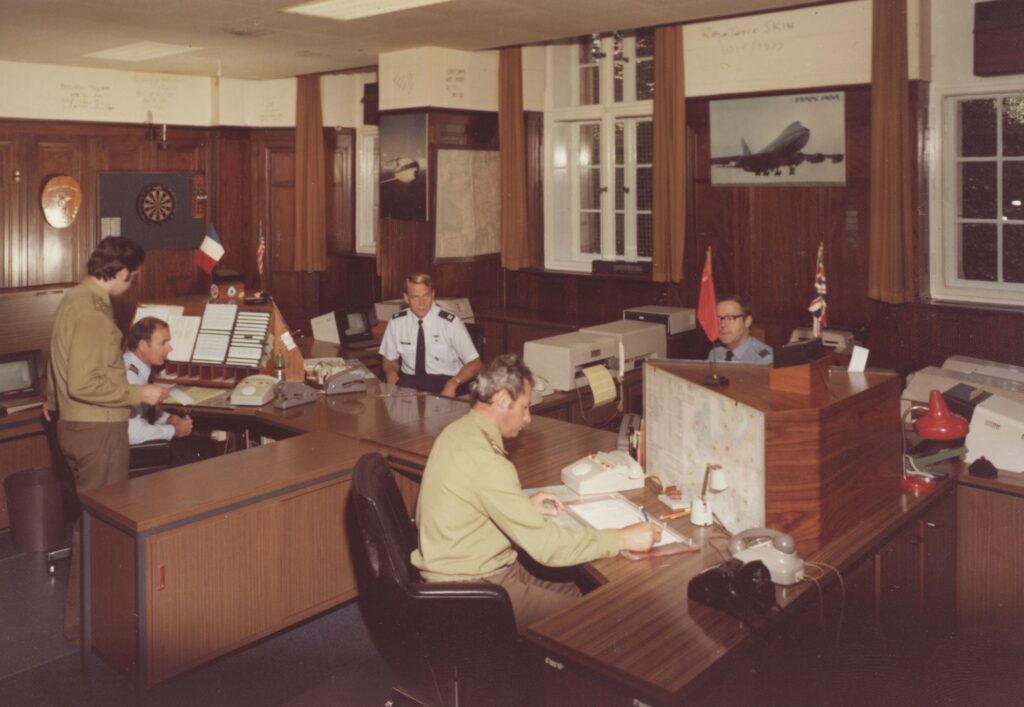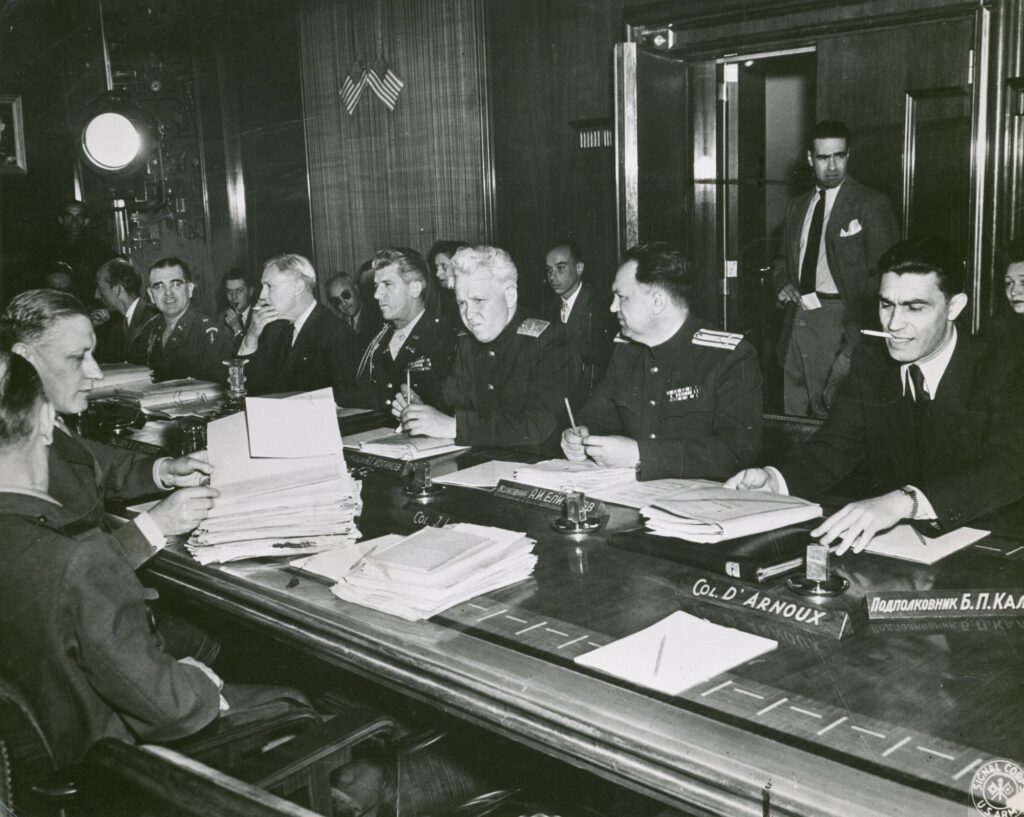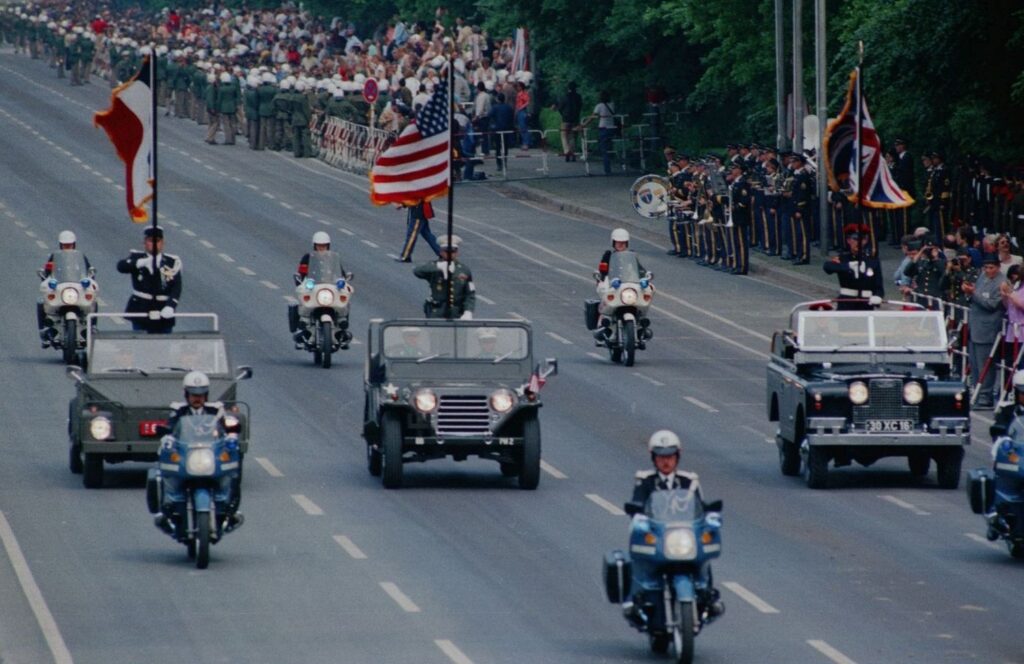In the German-speaking world, the definition of the word Alliierte (Allies) is only apparently fixed. Most people associate this term with the leading powers in the coalition against Hitler during the Second World War. The word entered the German language far earlier, however, and its meaning changed over time. Particularly during the Cold War, it assumed a new meaning in the Federal Republic and especially West Berlin, as suggested by the very name of the Allied Museum.
The 1993 Duden dictionary of the German language defines the term Alliierte as follows: “a) power, partner or confederate belonging to a coalition; b) the coalition of states in the Second World War.“ Viewed from within the history of concepts, the word Alliierte has been used in German for more than 350 years. The term has Latin roots, but only found its way into the German language as a French loan word. In the mid-seventeenth century, the verb “alliieren“ (to ally) and the adjective “alliiert“ (allied) were turned into nouns. Both derive from the French verb “s’allier“ (to ally oneself).

For historians, the term “Allied” first became important during the Coalition Wars against Napoleon. In the scholarly literature, the states that joined forces in the various wars are still referred to as “Allies.” The partners signed treaties of alliance against Napoleonic France, and such a treaty of alliance is one defining aspect of the description of the term “Allies.”
Another historical event in the context of which the word “Allies” is frequently used is the First World War. Although in German the term entente is more commonly used to refer to the alliance against Imperial Germany, Austria-Hungary and the Ottoman Empire, the official designation, translated from the English, was “Allied and Associated Powers.” According to the Encyclopedia Britannica (2007):
“The major Allied Powers in World War I were the British Empire, France and the Russian Empire, formally linked by the Treaty of London of Sept. 5, 1914; […] other nations, including the United States after its entry on April 6, 1917—that were arranged against the Central Powers were called ‘Associated Powers’, not Allied Powers; U.S. President Woodrow Wilson emphasized this distinction to preserve America’s free hand […].” The element of a formal treaty, which is so important in the history of the concept, becomes evident once again. During the First World War, the USA deliberately avoided the responsibilities of a treaty of alliance and remained an “associated power.” (This formal terminology underlines the fact that an alliance is based on a formal and binding agreement. By not ratifying a treaty of alliance in the First World War, the USA avoided the duties associated with it.)

In the Second World War, various treaties connected the Americans, British, Soviets and French in an alliance. Even before the USA formally entered the war, the Lend-Lease Program represented a contractual bond among the Allies. In postwar Germany, the term Allies became synonymous with the four victorious occupying powers. Administrative bodies like the Allied Kommandatura or the Allied Control Council, the governing authorities in Berlin and Germany, drew their name from it and it shaped public perceptions.
The advent of the Cold War further expanded the definition of the word. The second half of the 1940s saw the cementing of political, economic and geographical divisions between the zones controlled by the Western Allies and the Soviet occupation zone. The same was true of the situation in the quadripartite city of Berlin. The Soviet blockade and subsequent Airlift became decisive factors in the division of Germany and Berlin. Just three years after the war, the Western powers acknowledged their responsibility for Berlin and supplied the population of the city’s Western districts from the air. In this way, the American, British and French forces lost their status as occupation troops and became protecting powers.
The founding of the Federal Republic and the GDR in 1949 completed the division of Germany. In the West, the Allied High Commission of the British, Americans and French supervised the still young democracy in its early years. The division also influenced the term “Allies.” This is reflected in an October 1949 declaration on Berlin by the Allied High Commission: “The High Commission has again had under consideration the special situation of Berlin and wishes to emphasize the determination of the three Allied Governments to maintain their rights and obligations in that city […].“ When it came to Germany, for the Western powers there were only three Allied governments. In the wake of the Cold War, the Soviet Union was denied the status of an ally. Formally, the Western powers still shared responsibility for Germany and Berlin with the Soviet Union, but in practical terms these agreements were ignored.


This development is also reflected in German vocabulary on both sides of the border. A book of borrowed foreign words published in the GDR in 1958 defines Alliierte as referring to the “Western countries that fought against Germany in the First and Second World War.” The dictionary thus ignores the role of the Soviet Union as an Allied power, in keeping with Cold War thinking in terms of ideological camps. The same was true of the viewpoint of many West Berliners. They often used the term as a synonym for “protecting powers.”
In West Berlin, the term “Allies” was therefore closely associated with the American, British and French troops stationed there. For instance, the military parade that took place in West Berlin every year between 1964 and 1994 was known in German as “Allied Forces Day.”
The Allied Museum is also part of this tradition. The Museum’s name stands for the special historical relationship between the people of Berlin and the Western powers. Since 1998, the Allied Museum has dedicated itself mainly to the history of the American, British and French troop presence. In temporary exhibitions and events, the Museum has also repeatedly addressed the role of the Soviet occupying power and its troops stationed in the city. This will be even truer of the new permanent exhibition. Thirty years after the end of the Cold War, it is time to revisit the original meaning of the term “Allies.”
